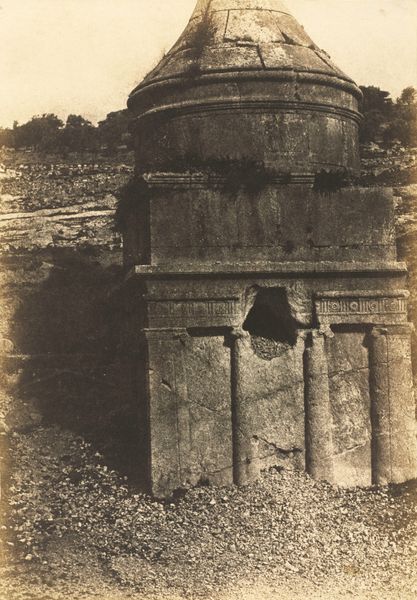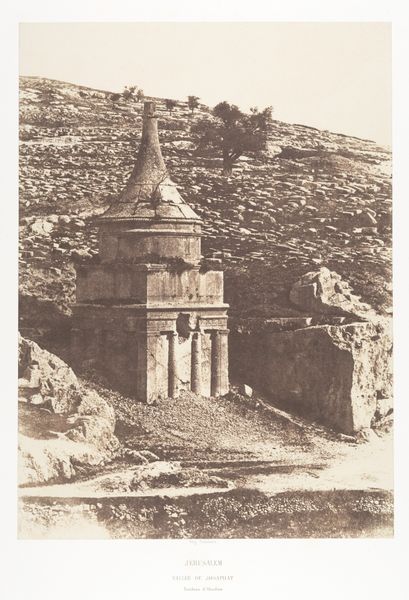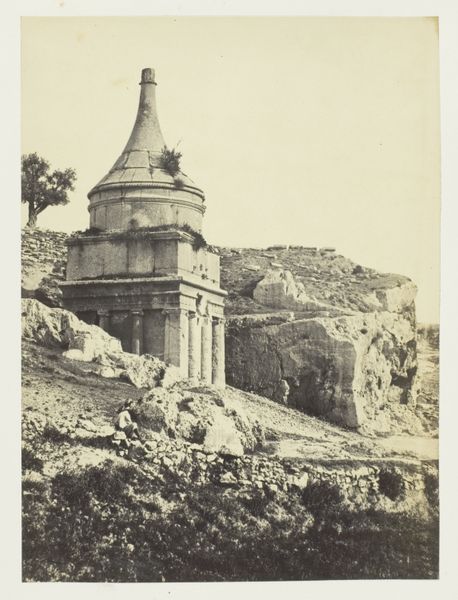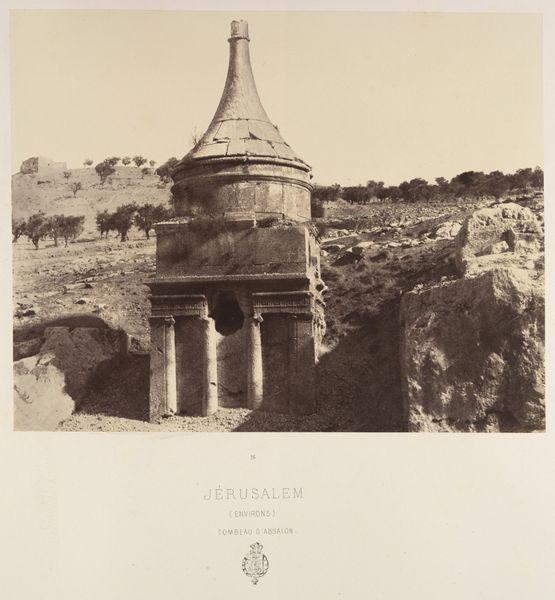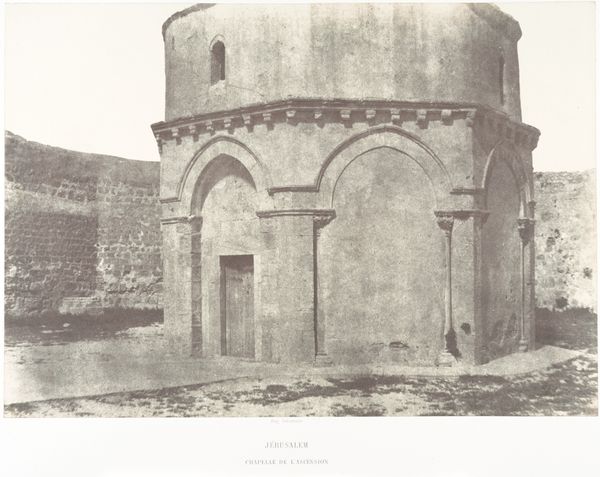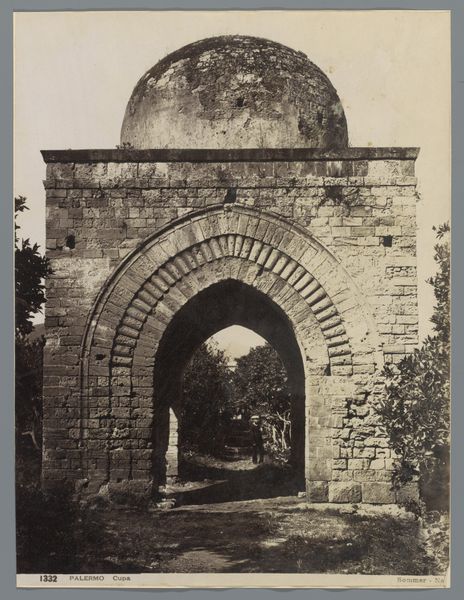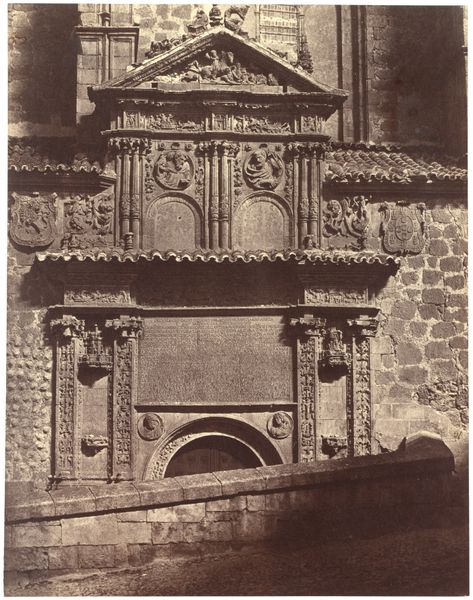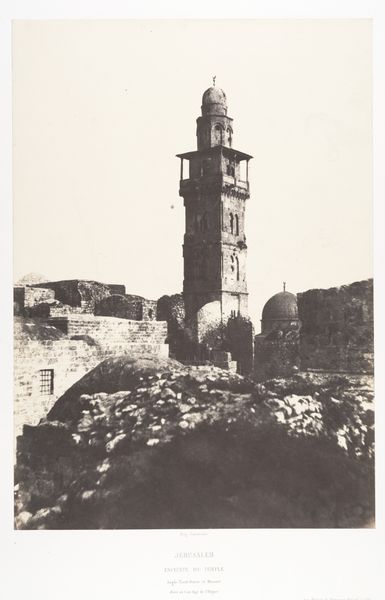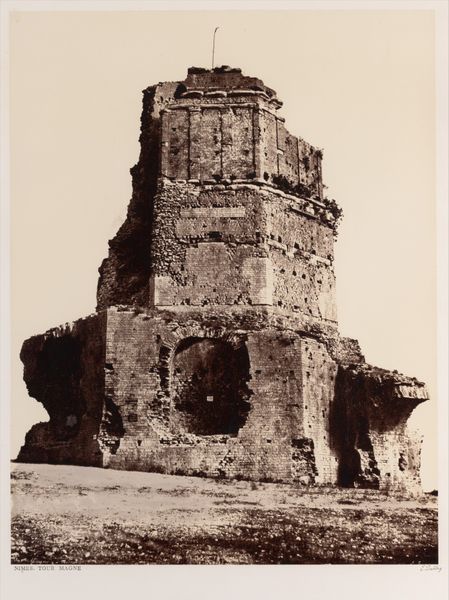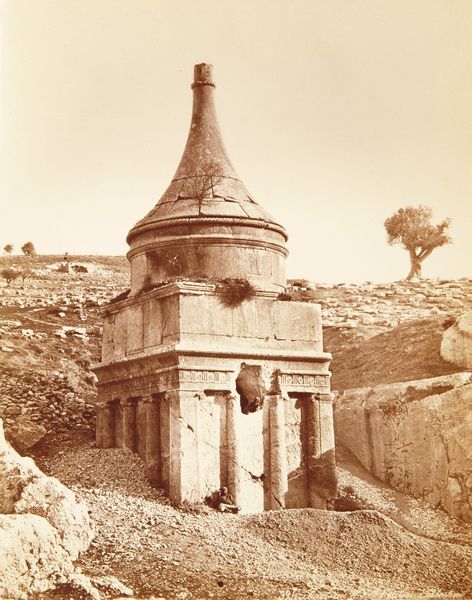
Jérusalem, Vallée de Josaphat, Détails du Tombeau d'Absalom 1854 - 1859
0:00
0:00
daguerreotype, photography
#
landscape
#
daguerreotype
#
photography
#
ancient-mediterranean
#
cityscape
Dimensions: Image: 33 x 23.1 cm (13 x 9 1/8 in.) Mount: 60 x 44.6 cm (23 5/8 x 17 9/16 in.)
Copyright: Public Domain
Curator: Look at this mesmerizing 19th-century daguerreotype by Auguste Salzmann, created between 1854 and 1859, called "Jerusalem, Valley of Josaphat, Details of Absalom's Tomb." The level of detail is amazing for such an early photographic process. Editor: It feels hauntingly serene. The weathered stone and somber tones lend it an air of melancholic grandeur. The structure dominates the frame. There’s something unsettling about its isolation. Curator: That isolation, I think, amplifies the Tomb’s symbolic weight. It's not just a tomb; it’s a visual representation of fragmented historical and religious narratives. Absalom, in Jewish, Christian, and Islamic traditions, is a figure of rebellion against his father, King David. Editor: And the damage to the structure becomes another layer to the story—it almost feels vandalized. This image exists, for me, at the intersection of religious narrative, power, and acts of resistance. This could reflect not just biblical history but also contemporary power dynamics in Jerusalem. The very act of photographing it could have political implications. Curator: Photography then was also about verification. Salzmann was commissioned to photograph biblical sites, providing visual ‘proof’ and potentially reinforcing certain religious narratives. This adds another dimension to your argument. We need to understand photography as a means of constructing as much as it documents a cultural narrative. Editor: Exactly. Looking at how light and shadow play across the monument, it looks both eternal and vulnerable. It calls into question how we frame the history of ancient cultures when viewed through a Western, colonial lens. Who gets to tell the story? Who benefits? Curator: And isn't that the perennial question when confronting images from the past? The tomb becomes a canvas onto which centuries of interpretations and power struggles are projected. What seems static is actively engaged in a very dynamic exchange with history. Editor: This photograph reveals just how relevant our interpretations are today, allowing for necessary and challenging contemporary dialogues. It is more than a simple visual artifact, it is a conduit for historical revision and conversation.
Comments
No comments
Be the first to comment and join the conversation on the ultimate creative platform.
